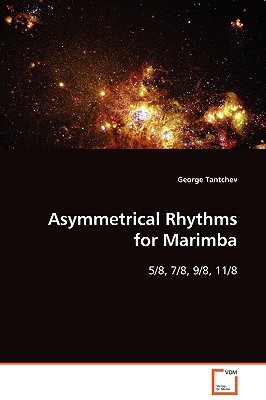
- We will send in 10–14 business days.
- Author: George Tantchev
- Publisher: VDM Verlag
- ISBN-10: 3639008588
- ISBN-13: 9783639008586
- Format: 15.2 x 22.9 x 0.4 cm, minkšti viršeliai
- Language: English
- SAVE -10% with code: EXTRA
Reviews
Description
Ever since Igor Stravinsky and Bela Bartok used asymmetrical rhythms in Petrushka, Le Sacre de Printemps, Concerto for Orchestra and other works, more and more composers have utilized such rhythms. These rhythms give the music tension, diffraction and various accent possibilities. The discovery of the vast potential of the marimba in recent decades fostered the creation of an unprecedented volume of literature written specifically for the instrument. Marimbists are constantly being challenged technically and musically by new compositions, which often include challenging asymmetrical rhythmic combinations. A study in asymmetrical rhythms will fill a gap in the marimba and percussion pedagogy materials. It will facilitate the process of learning and enable a better understanding of the various accent possibilities embodied in these rhythms.
EXTRA 10 % discount with code: EXTRA
The promotion ends in 23d.19:38:54
The discount code is valid when purchasing from 10 €. Discounts do not stack.
- Author: George Tantchev
- Publisher: VDM Verlag
- ISBN-10: 3639008588
- ISBN-13: 9783639008586
- Format: 15.2 x 22.9 x 0.4 cm, minkšti viršeliai
- Language: English English
Ever since Igor Stravinsky and Bela Bartok used asymmetrical rhythms in Petrushka, Le Sacre de Printemps, Concerto for Orchestra and other works, more and more composers have utilized such rhythms. These rhythms give the music tension, diffraction and various accent possibilities. The discovery of the vast potential of the marimba in recent decades fostered the creation of an unprecedented volume of literature written specifically for the instrument. Marimbists are constantly being challenged technically and musically by new compositions, which often include challenging asymmetrical rhythmic combinations. A study in asymmetrical rhythms will fill a gap in the marimba and percussion pedagogy materials. It will facilitate the process of learning and enable a better understanding of the various accent possibilities embodied in these rhythms.


Reviews